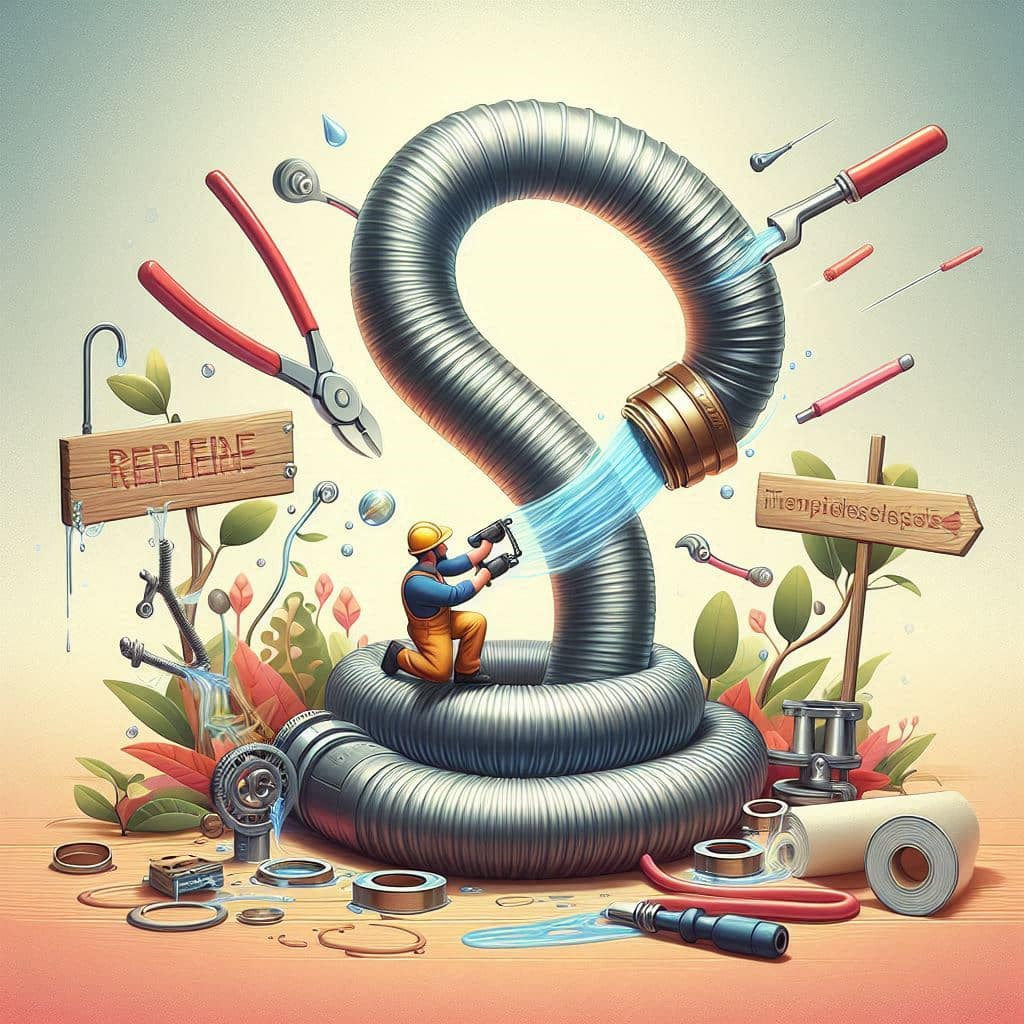Flexible Hose Repair: From Leaky Mess to Seamless Flow

You’re watering your garden on a sunny afternoon, feeling triumphant as tomato vines sway in appreciation. Suddenly, a fine mist sprays your leg. Not refreshing. You follow the trail and—there it is. Your flexible hose has sprung a leak. Cue frustration, wet socks, and a choice: toss it or fix it?
In today’s post, we’ll deep-dive into the art (yes, art!) of flexible hose repair. Whether it’s a minor puncture or a full-blown rupture, there’s a fix. Better yet? You don’t need to be a plumber or spend a fortune.
Why Flexible Hoses Fail—and What That Means
Flexible hoses are the unsung heroes of gardening, car washing, pressure cleaning, and even outdoor cooling setups. But they’re also prone to wear. Common culprits include:
- Kinks and bends: Over time, these stress points weaken the hose material.
- Sun exposure: UV rays break down rubber and plastics.
- Poor storage: Left in coils or tangled, hoses crack and tear.
- Pressure surges: Sudden spikes—especially in pressurized systems—can cause burst points.
Understanding why hoses fail makes you more equipped to repair them intelligently—and prevent future problems.
Types of Hose Damage and Repair Solutions
Let’s categorize hose issues like a pro. Not every leak needs a total replacement, and not every repair is complicated.
| Damage Type | Description | Ideal Fix |
|---|---|---|
| Pinholes | Tiny leaks from pressure or punctures | Rubber patch or hose repair tape |
| Cracks or splits | Surface fractures from aging | Couplers or hose menders |
| End connection leak | Drip at faucet or spray nozzle | Replace washers or connectors |
| Kink damage | Soft or ruptured spots | Cut and rejoin with fittings |
Understanding what you’re dealing with is half the battle. The other half is choosing the right fix.
Must-Have Tools for Quick Repairs
You don’t need an arsenal, but a few trusty tools will make repairs smoother:
- Hose clamp pliers
- ✂️ Utility knife or shears
- Replacement connectors (male/female)
- Rubber repair tape or heat shrink tubing
- Soap and water for cleaning
Optional but helpful: a heat gun for shrink tubing and extra washers for worn-out connections.
Step-by-Step Guide: Fixing a Split Hose Section
Let’s walk through one of the most common repairs—the cracked middle section.
Step 1: Assess and Mark
Identify the exact location of the damage. Use a marker to outline the damaged area.
Step 2: Cut Clean
Use sharp shears to cut out the damaged portion cleanly. Avoid ragged edges—they compromise the seal.
Step 3: Prepare Coupler
Insert a male hose mender into one cut end and a female mender into the other. Push firmly until snug.
Step 4: Clamp Secure
Fasten clamps around each end. Tighten with pliers until secure, but not crushing.
Step 5: Test Run
Reconnect your hose to the tap and run water through. If it holds without dripping—you’ve nailed it.
Repair Tape Tricks: Fixing Pinholes Fast
For minor leaks or hairline punctures:
- Clean the area with mild soap and let dry.
- Stretch rubber repair tape and wrap tightly over leak.
- Overlap layers to build thickness and seal pressure.
- Let it sit for a few hours before reusing.
Bonus tip: Many tapes are UV-resistant and waterproof, adding durability even in tough outdoor conditions.
Pro Tips for Long-Term Hose Care
A good repair is great—but avoiding damage in the first place is even better. Here’s how:
- Store smart: Hang hoses in loops or use hose reels to prevent kinks.
- Avoid dragging: Pulling hoses over rocks and pavement causes abrasions.
- Drain before storing: Water trapped inside freezes in winter, causing cracks.
- Use pressure regulators: Especially in irrigation systems—keep the flow stable.
Think of it as hose hygiene: simple habits that extend life and reduce breakdowns.
When to Repair vs. Replace
Not every hose deserves CPR. So how do you know?
- Repair if:
- Damage is limited to one section
- Hose material is still flexible and strong
- Nozzle or faucet leaks are isolated
- Replace if:
- Multiple splits or holes appear frequently
- Hose feels brittle or sticky from UV damage
- Repair attempts don’t hold under pressure
A quality hose can last 5–10 years with proper care—but knowing when to let go saves time and frustration.
Real-World Fixes and Reader Hack Spotlight
“I didn’t want to buy another $40 hose, so I cut the ends off and turned the broken section into a DIY drip line for my flower bed. Worked beautifully.” — Lena, backyard innovator from Georgia
Another reader shared how they used heat shrink tubing over a repaired split, then painted the section with a UV-resistant sealant—transforming a weak spot into a strong zone that lasted years.
Your repairs can spark invention. Don’t underestimate a good fix.
Sustainability Angle: Repair Over Replace
Fixing a hose isn’t just thrifty—it’s eco-conscious. Every hose saved from landfill reduces plastic waste and resource consumption. Some brands even offer recyclable hoses or biodegradable components.
Consider keeping spare parts from old hoses. Connectors, clamps, or washers can be repurposed for future repairs.
In the age of throwaway culture, a little effort goes a long way toward sustainability—and savings.
Final Thoughts: Don’t Let a Leak Defeat You
A leaky hose might feel like an annoying setback—but with a few tools and tricks, it becomes a triumph of resourcefulness. Flexible hose repair isn’t just about plugging holes; it’s about learning a valuable DIY skill, saving money, and reducing environmental impact.
So the next time you spot a rogue spray on your garden stroll, embrace it as a chance to fix, learn, and feel just a little more like a garden genius.



